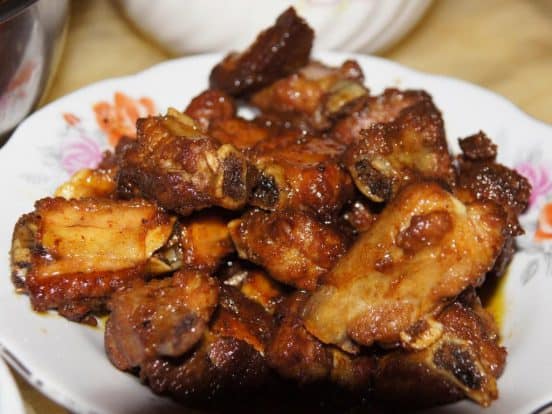
As such, it’s a story of misdirected good intentions and perverted body intelligence. There’s another side to this story, though, and it’s found in home cooking.
Cooking from scratch, salt and sugar will still continue to be important additions that we like; fats will play their role.

Carbohydrates (read: sugars) are bliss, fat – as much as people want to go fat-free for supposed health benefits – makes many a dish tasty and gives that mouth feel that just has one want more.
(Protein, ever-more popular for the health- and muscle-obsessed, isn’t to be given short shrift, but that juicy steak wouldn’t be quite as tasty if it wasn’t for the fat it also contains and for sugars that crisp it.)
Too much, however, simply cannot be added.
Try adding as much of any of the three desirables as the food industry does, and there would be a limit even to the fat that we seem, bodily, not to have a limit for.
One can like vegetables drenched in oil or butter, have a thing for cheese fondue, but a dish mainly consisting of added fat just wouldn’t work.
Sugar has a pretty high limit, too. Especially if used to it, a baklava oozing sugar syrup is bliss – but not for always.
‘Normal’ dishes that aren’t deliberately sweet would hardly ever get any sugar added (unlike their processed simulacra).
Salt is the most obvious example, of course. There definitely is such a thing as too salty. Potato chips and the like, alongside ready-made meals, may raise the level of salt we consider normal and tasty, but we can get ourselves back down to more normal levels. And again, the exaggerated-but-usual salt content of processed food products could hardly be replicated in home cooking; it would all just be unbearably salty there.
Proper usage, however, is perfectly possible.
In Chinese cooking, especially, I’ve found these basic ingredients to be used to great effect, especially with vegetables, and in ways that will be rather better for health.

Chinese food outside of the country is only too much associated with oil-soaked fried noodles; and thinking of food in China, only too much attention is placed on ingredients such as chicken feet or dog meat.
Really, however, something that many a visitor has noted is also how tasty many of the foods are, and how vegetables formerly disliked suddenly turn into favorites.
The reason, as described before, is that the natural sugars in the foodstuffs employed are combined with oil or fat in the frying process, the flavors drawn out even better by salt (and perhaps a smidgen of MSG), and wonderful aromas thus produced.
In some cases, one even gets all the ‘magic ingredients’ combined in single dishes.

Pork ribs of the sweet-sour variety, for example, are tastily fatty and employ both sugar and salt – plus some (mild) Chinese vinegar, plus the slow cooking that makes for succulent, melt-in-your-mouth (itself an effect mainly of the fat content), meat, plus a bit of frying for a crunchy crust.
Thus, salt, sugar(s) and fat are employed to be enjoyed – and good for us.
Interestingly, there’s also the side effect that a regular diet of foods like this actively trains the taste buds to know what’s natural, tasty and healthy and thus to dislike many of the modern junk food concoctions as just too sweet.
We as bodies are only too easy to trick into seemingly enjoyable but ultimately unhealthy eating, though – witness the rise of obesity also among China’s youth…

Leave a Reply
You must be logged in to post a comment.